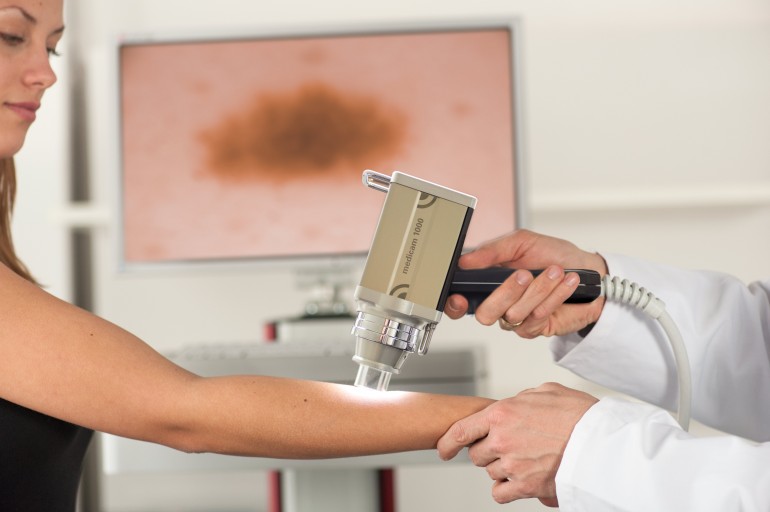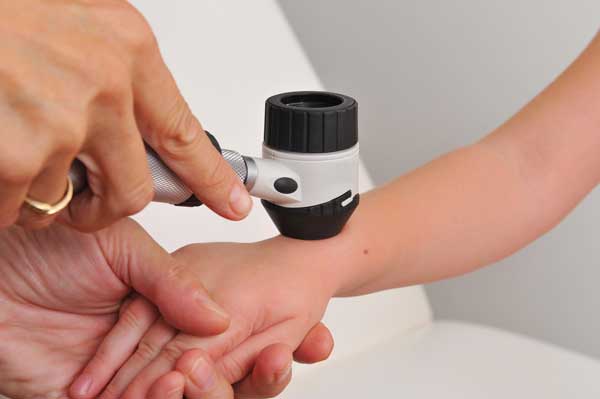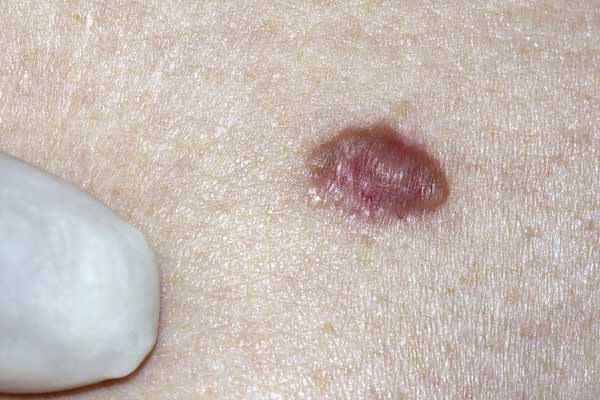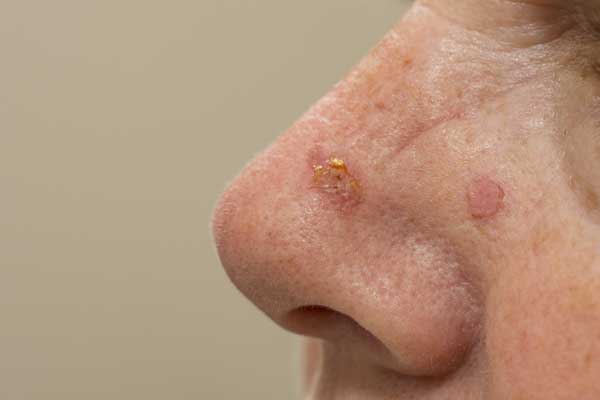Dr Halabi-Tawil has worked several years in the oncodermatology department of St-Louis Hospital Paris and has acquired a solid knowledge and experience in diagnosing and treating all types of skin cancers, with a multi-disciplinary approach when needed.
Onco-dermatology
Melanoma Detection / Fotofinder

Total body mapping at Hotel-Dieu de France
The gold standard for MELANOMA screening and early detection. With approximately one person dying every hour from Metastatic Melanoma worldwide, Melanoma remains the deadliest type of skin cancer. And despite the significant progress made on survival of metastatic melanoma patients this past decade, prevention remains the best chance of survival.
What does a melanoma look like?
Dermoscopy

Dermoscopy is a relatively new technology, consisting of a handy skin magnifier, that allows to immediately detect suspicious moles, pre-cancerous lesions, melanomas, or carcinomas. Patients especially at risk for developing skin cancers are those:
- With multiple atypical moles,
- With a personal or family history of skin cancer (whatever the type),
- With fair phototypes (white skin, blues eyes, blond or red hair, that easily burns when exposed to the sun),
- With sun-damaged skin,
- Immunosuppressed patients such as transplant recipients, HIV patients, and patients under immunosuppressive therapies (cyclosporine, Imurel, methotrexate…) and biotherapies (eg. anti-TNF like Remicade, Humira etc…) are also more at risk of developing skin cancers.
Cutaneous carcinomas

Did you know that Basal Cell Carcinoma is the most frequent cancer of all? Its incidence is on the rise worldwide, as for all other skin cancers. It usually looks like a small pinkish bump that will keep on growing, and bleeds very easily. In some cases it can look like a wound that doesn’t heal, or like a pigmented patch or bump.
Spinal cell carcinoma is the second most frequent skin cancer. It usually looks like a whitish and hard bump, or like a wound that doesn’t heal. In some cases it just looks like a red scaly patch that doesn’t go away.
Cutaneous lymphomas

Cutaneous lymphomas are less frequent than ‘’solid’’ cancers like carcinomas. They are of several types, the most frequent one being Mycosis Fongoides (MF). MF looks like red and scaly patches and plaques over the body that can itch and can wax and wane. Other types of cutaneous lymphomas can present like small bumps or nodules or even ulcers on the skin.
Actinic Keratosis

Actinic Keratosis is a widely prevalent pre-cancerous lesion found in the middle-aged and elderly patients. It usually present as small rough patches, and often are more felt than seen, on chronically sun-exposed areas, mainly the bold scalp, face, ears, and hands. Actinic keratosis can be treated with topical treatments (creams) or cryotherapy.
Sometimes a skin biopsy is performed to exclude a transformation into a carcinoma.

